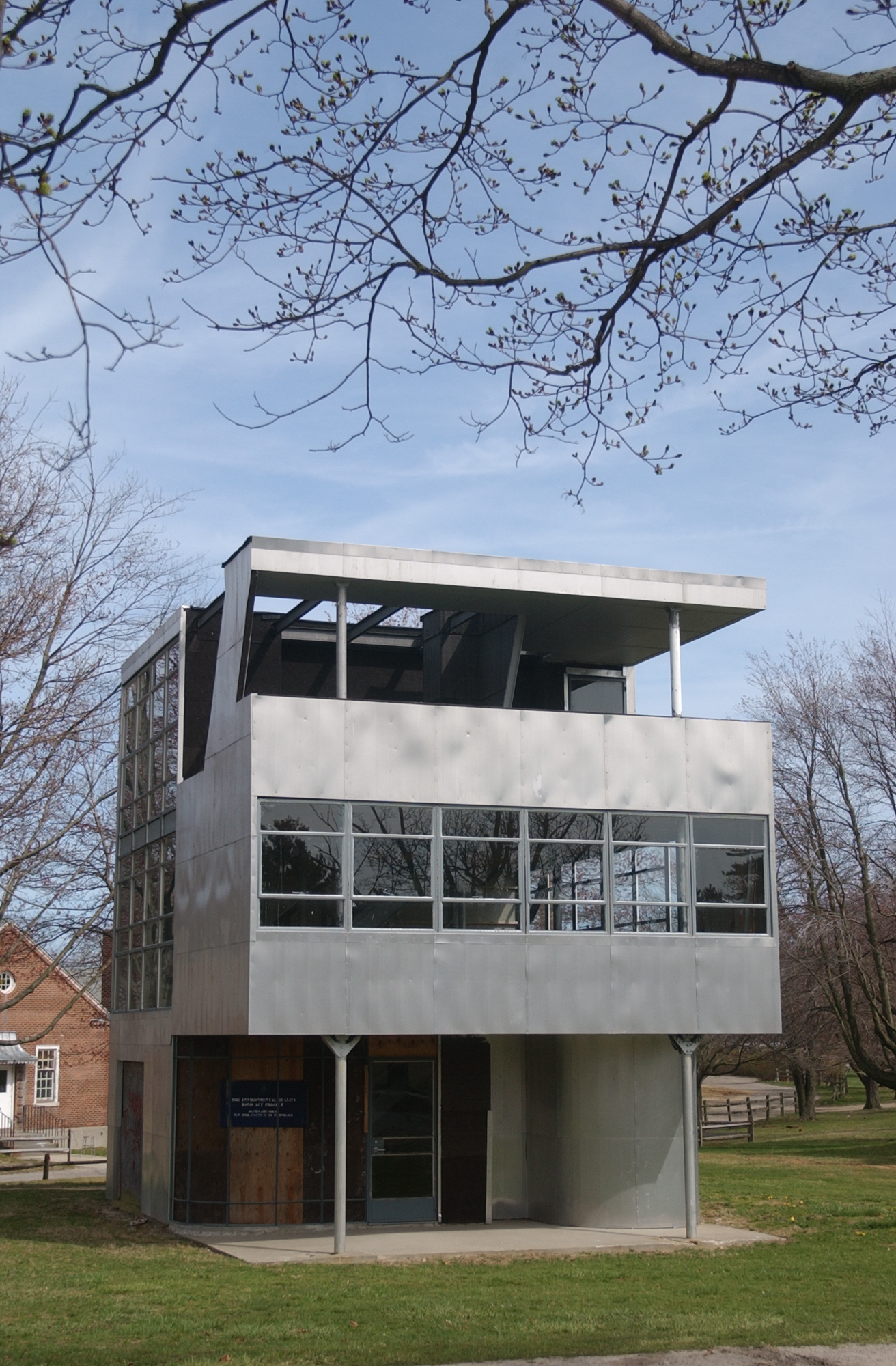House Gets Its Just Desert
 |
|
fold-away tables. Courtesy Aluminaire Foundation |
 |
|
of Technology on Long Island. Courtesy Michael Schwarting. |
 |
|
|
A case can be made that, as much as anyone this side of Frank Lloyd Wright and Richard Neutra, Albert Frey brought Mid-Century Modern to America and California. The Palm Springs community has known this for a while, and continues to celebrate its connection to the foremost Desert Modernist as a means of appreciation and tourism.
The latest such effort is the Aluminaire (1931), Frey's first design after leaving Europe and his mentor Le Corbusier behind to come to America.
"It was a very compact but brilliantly planned house for a small space," said Mark Davis, who helped rally Palm Springs to embrace the unusual artifact.
The Swiss-born and educated Frey (1903-1998) was 28 when he collaborated with A. Lawrence Kocher, managing editor of Architectural Record magazine, to design a prefabricated, modular home out of aluminum and steel.
"This was the type of home that was supposed to be built out of off-the-shelf materials," Davis said, which were "meant to be replaced every so often." The three-story house was exhibited to wide acclaim in the 1930s by its sponsors, the Allied Arts and Industries and the Architectural League of New York. Davis says it included a dumbwaiter, drive-through garage, and foldout dining table for space conservation.
It was his 1930s partnership with Kocher that brought Frey to the California desert, where he would make his biggest impact and eventually die after living 95 years of the 20th century. Drawn there by a project for Kocher's brother, Frey clearly felt a synergy between the region and his evolving style of Modernism.
Meanwhile, the Aluminaire was purchased by architect Wallace Harrison to be a guest house at his country estate in Huntington, Long Island. The house was moved several times and fell under threat of demolition before a preservation drive saved it. Still, it had been in storage for several years when Davis and his desert colleagues found out about it in 2013.
Much of the credit for saving the building goes to two preservation-minded architects and professors, Michael Schwarting and Frances Campani, whom Davis began inviting to speak each year at Palm Springs Modernism Week. At the time, the house was slated to be reassembled in the Sunnyside neighborhood of Queens, New York.




